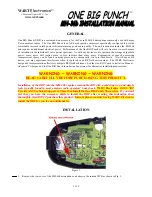
Product description
3.7
Regulating the DRL 6-2 integrated dryer
Page 28
BOGE Operating instructions for scroll compressors, series EO 6...EO 22 D
Functional principle
of the DRL 6-2
The dryer contains a refrigerating system that cools the compressed air. The
steam saturation limit is reduced in the process causing condensate to form,
which is discharged by a condensate drain.
The greater the cooling temperature difference of the compressed air, the
larger the quantity of condensed water.
The lower the cooling temperature of the compressed air, the lower the mois-
ture content. The lower limit of compressed air cooling is deduced from the
dryer's operating principle, i.e. that moisture separation in liquid form can only
take place above the freezing point of water.
3.7 Regulating the DRL 6-2 integrated dryer
The DRL 6-2 dryer is installed in Type EO 6 D and EO 11 D compressors.
Compressed air side
The compressed air that is pre-cooled and moisture-saturated in the after-
cooler enters the refrigerant dryer and is precooled in the first cooling stage in
the air / air heat exchanger ((8), see fig. 3.4), without any additional external
energy. This is performed against the flow of the already cooled compressed
air, which heats up as a result. In the second cooling stage in the refrigerant /
air heat exchanger that is cooled by the built-in refrigeration system, cooling to
the desired pressure dew point takes place. The cooled compressed air is then
heated again in the air / air heat exchanger as already described. The pres-
sure dew point is shown on the pressure dew point display.
Refrigerant side
The refrigerant is injected into the refrigerant / air heat exchanger and vapor-
ised. This removes heat from the compressed air flow.
An output control system on the refrigerant side controls the required com-
pressed air output, in order to ensure that the pressure dew point remains
constant in all output ranges.
The refrigerant compressed in the refrigerant compressor is condensed in
the condenser and becomes available again for vaporisation.
CAUTION
Risk of injury due to contact with hazardous substances, e.g. from
inhalation!
Î
Wear PPE.
Î
Avoid contact with skin and eyes.
Î
Do not inhale vapours or mists.
Î
Observe the information on the relevant safety data sheets.
















































